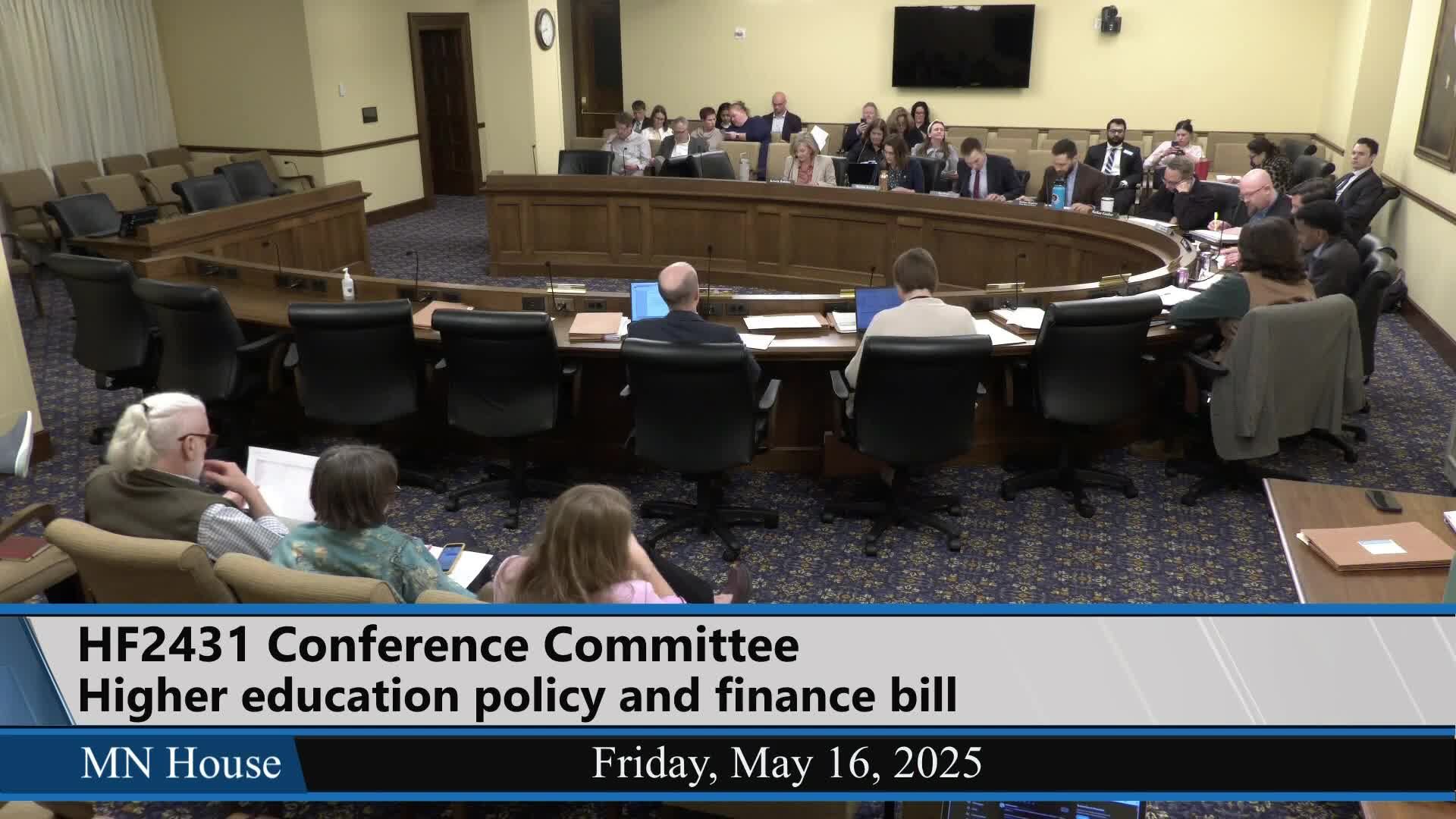House approves $51M increase for state grant program and changes cannabis funding
May 17, 2025 | 2025 Legislature MN, Minnesota
This article was created by AI summarizing key points discussed. AI makes mistakes, so for full details and context, please refer to the video of the full meeting. Please report any errors so we can fix them. Report an error »

In a recent meeting of the Minnesota Legislature's Conference Committee on HF2431, significant discussions centered around state grant programs and funding allocations for higher education. The House proposed an appropriation of $51,958,000 above the base for the 2026-2027 fiscal years, with an additional $36,302,000 earmarked for future years. This funding aims to address the growing financial needs of educational institutions across the state.
One of the notable changes discussed was the House's decision to increase the reduction for dual training grants aimed at legal cannabis employers, setting it at $1,500,000 for each biennium. This move reflects ongoing adjustments in response to the evolving cannabis industry in Minnesota. Additionally, the House proposed a one-time appropriation of $500,000 for remediation efforts at Lake Superior College, aligning with Senate recommendations.
The meeting also highlighted various reductions in funding, including a $1,408,000 cut for the University of Minnesota's research innovation office and a $1,184,000 reduction for the Humphrey Forum. These cuts are part of broader efforts to streamline budgets and prioritize essential programs amid fiscal constraints.
Another significant topic was the proposed increase in the tuition cap to 2% for the upcoming fiscal year, which is projected to save approximately $12,293,000. This adjustment aims to balance the financial needs of institutions while considering the economic impact on students and families.
As discussions progressed, it became clear that several items remained unresolved, particularly regarding the organization of Minnesota State and the handling of menstrual product appropriations. The House expressed its intent to maintain separate funding for these initiatives rather than consolidating them, indicating a commitment to specific educational and health-related needs.
In conclusion, the meeting underscored the complexities of funding higher education in Minnesota, with various proposals reflecting both the challenges and priorities facing the state. As the committee continues to negotiate, the outcomes will significantly influence the financial landscape of Minnesota's educational institutions and the support available to students in the coming years.
One of the notable changes discussed was the House's decision to increase the reduction for dual training grants aimed at legal cannabis employers, setting it at $1,500,000 for each biennium. This move reflects ongoing adjustments in response to the evolving cannabis industry in Minnesota. Additionally, the House proposed a one-time appropriation of $500,000 for remediation efforts at Lake Superior College, aligning with Senate recommendations.
The meeting also highlighted various reductions in funding, including a $1,408,000 cut for the University of Minnesota's research innovation office and a $1,184,000 reduction for the Humphrey Forum. These cuts are part of broader efforts to streamline budgets and prioritize essential programs amid fiscal constraints.
Another significant topic was the proposed increase in the tuition cap to 2% for the upcoming fiscal year, which is projected to save approximately $12,293,000. This adjustment aims to balance the financial needs of institutions while considering the economic impact on students and families.
As discussions progressed, it became clear that several items remained unresolved, particularly regarding the organization of Minnesota State and the handling of menstrual product appropriations. The House expressed its intent to maintain separate funding for these initiatives rather than consolidating them, indicating a commitment to specific educational and health-related needs.
In conclusion, the meeting underscored the complexities of funding higher education in Minnesota, with various proposals reflecting both the challenges and priorities facing the state. As the committee continues to negotiate, the outcomes will significantly influence the financial landscape of Minnesota's educational institutions and the support available to students in the coming years.
View full meeting
This article is based on a recent meeting—watch the full video and explore the complete transcript for deeper insights into the discussion.
View full meeting
